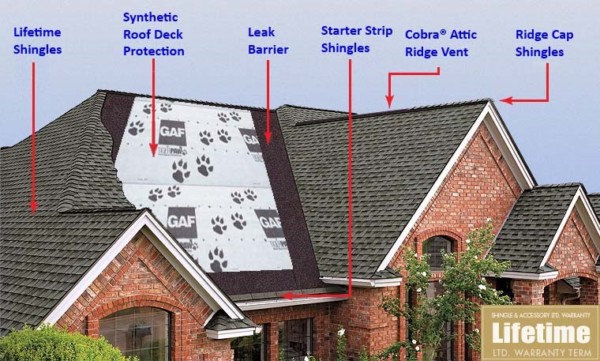Faq
Fill out the form below and one of our roofing specialist will contact you.
Knowing when to replace a roof is one of our most popular questions. There are several key signs that indicate roof replacement is in order, such as:
- Bucking and curling shingles. Bucked shingles occur when moisture in the attic space causes nails to push out of place and loosen the shingle. This compromises the shingles’ performance and exposes the roof to the elements, which can result in leaks and even more moisture damage.
- Algae growth. Bacteria from algae eat through the shingles, especially if they are low-cost shingles that are made primarily of limestone. According to the Department of Energy, cool roofs are more susceptible to algae formation, although any roof color can experience algae growth.
- Missing granules. Asphalt roofing shingles are made up of small granules. When these granules come loose, it can impact the shingles’ performance. You can locate missing granulates by looking for fragments in the gutter system.
- Missing shingles. Professional roofing contractors are highly skilled at roofing installation and keeping shingles in place. However, these can blow away in the wind or become loose as they age. Missing shingles can allow rainwater into the home.
- Mold in the attic. This is one of the most concerning aspects of roof replacement. Mold forms in areas such as the rafter beams and the plywood on the underside of the roof.
Asphalt roofs are more cost-effective and you get great warranty options, however it has a shorter lifespan and needs more maintenance.
A metal roof system is more expensive, but also has a longer lifespan and requires less maintenance.
The longevity of your roof will depend on its materials, its installation, and its ventilation, so it’s hard to give a straight answer. Typically, a solid, well-constructed roof will last between 12-15 years. Depending on the quality and type of shingles you chose and the underlayment of your roof, that number can go up to 30 or more.
A roof consists of much more than a layer of shingles. Replacing the entire system, which includes the materials below, is the best route for enhancing the roof’s performance:

- Leak barrier protection Creates a seal to block water from vulnerable areas of the roof such as the valleys and chimneys.
- Synthetic roof deck protection: Provides a second layer of protection to defend against roof rot.
- Starter strip shingles: Prevents shingles from blowing off the roof.
- Lifetime shingles: Top-of-the-line shingles that are designed to last a lifetime and provide the best value. High-quality asphalt roofing can yield a return on investment of 65.8%.
- Ventilation: Ventilation is essential to the health of a roofing system. Without adequate airflow, energy bills can skyrocket and roof shingles can become damaged during hot weather.
